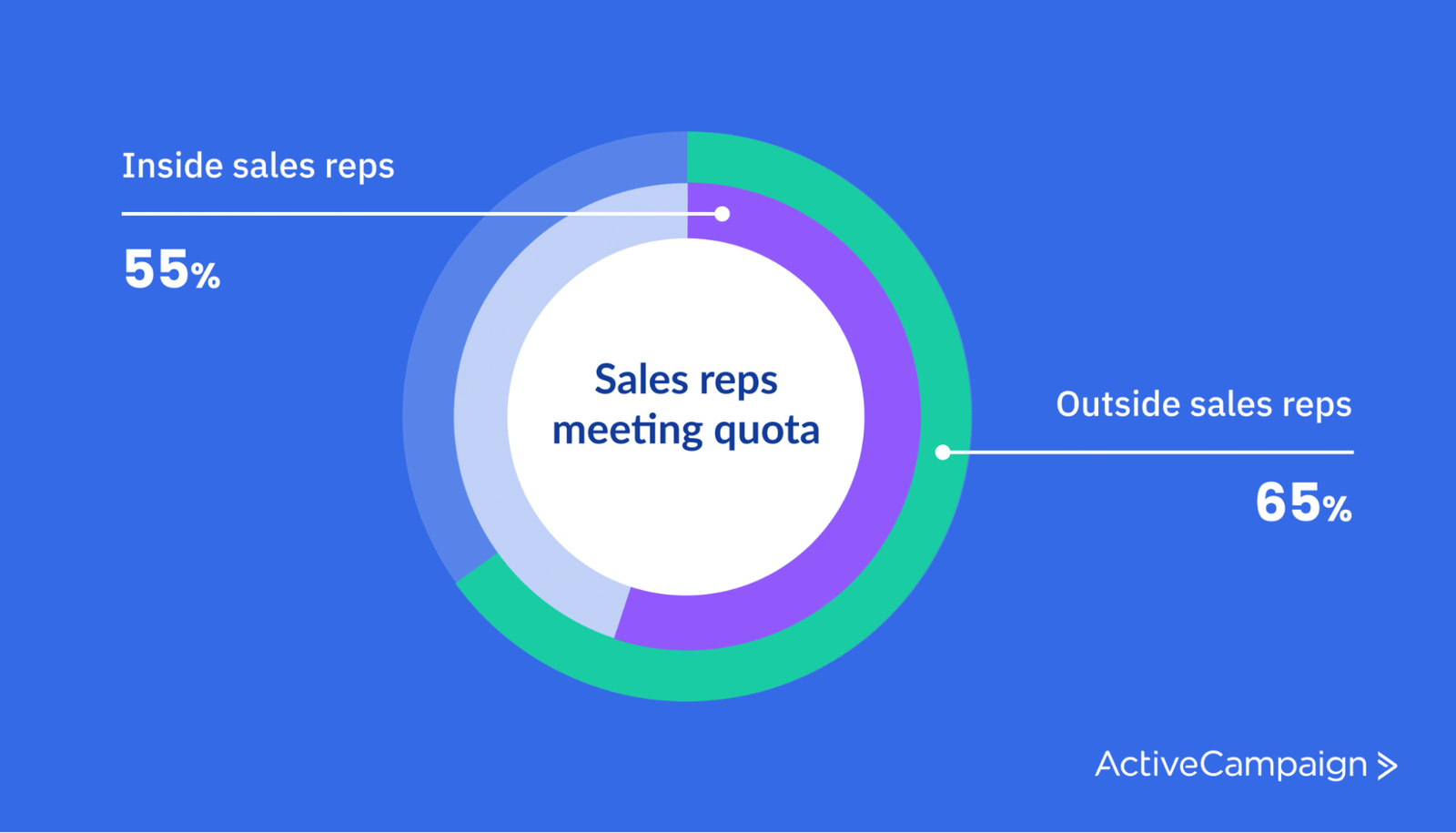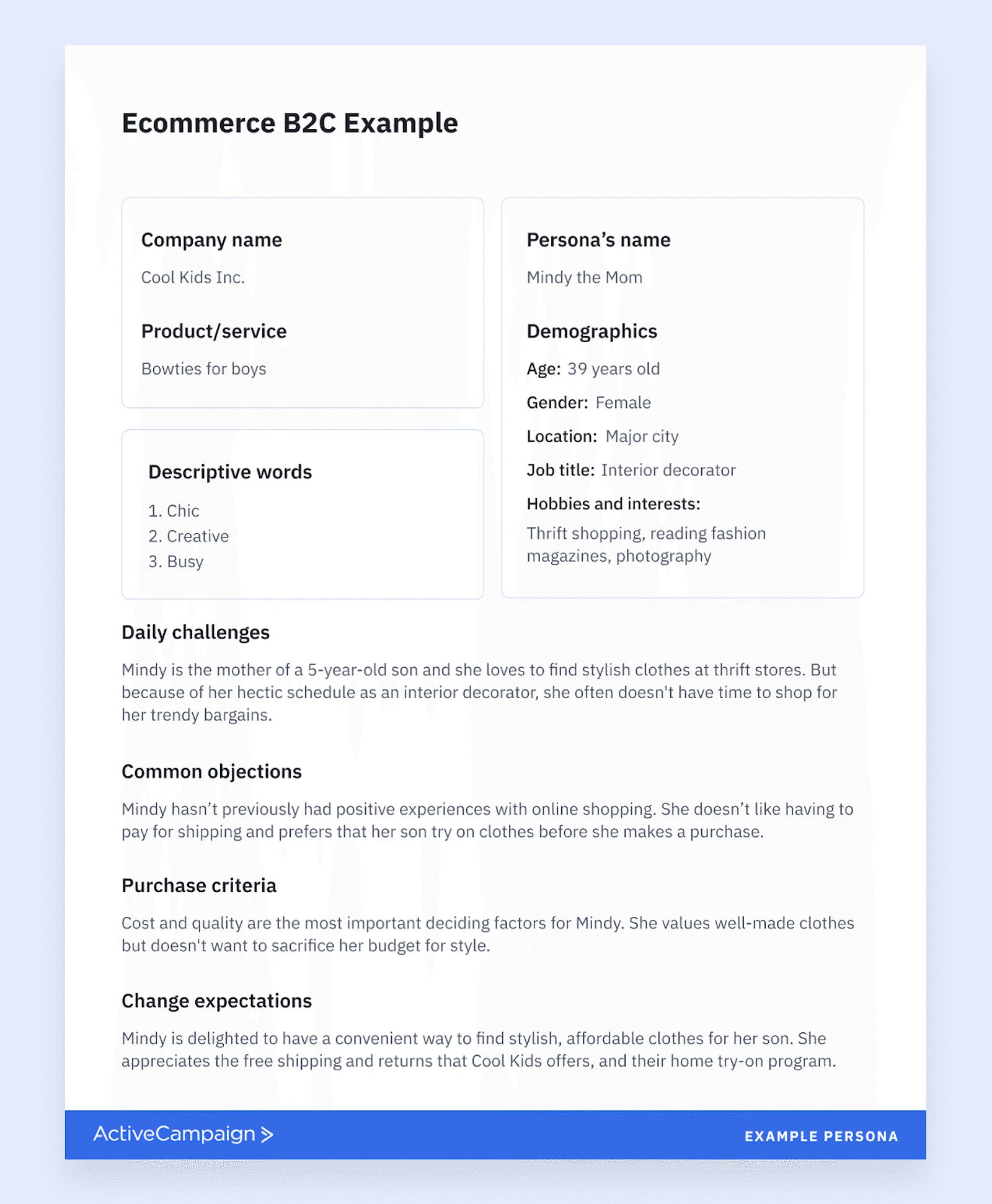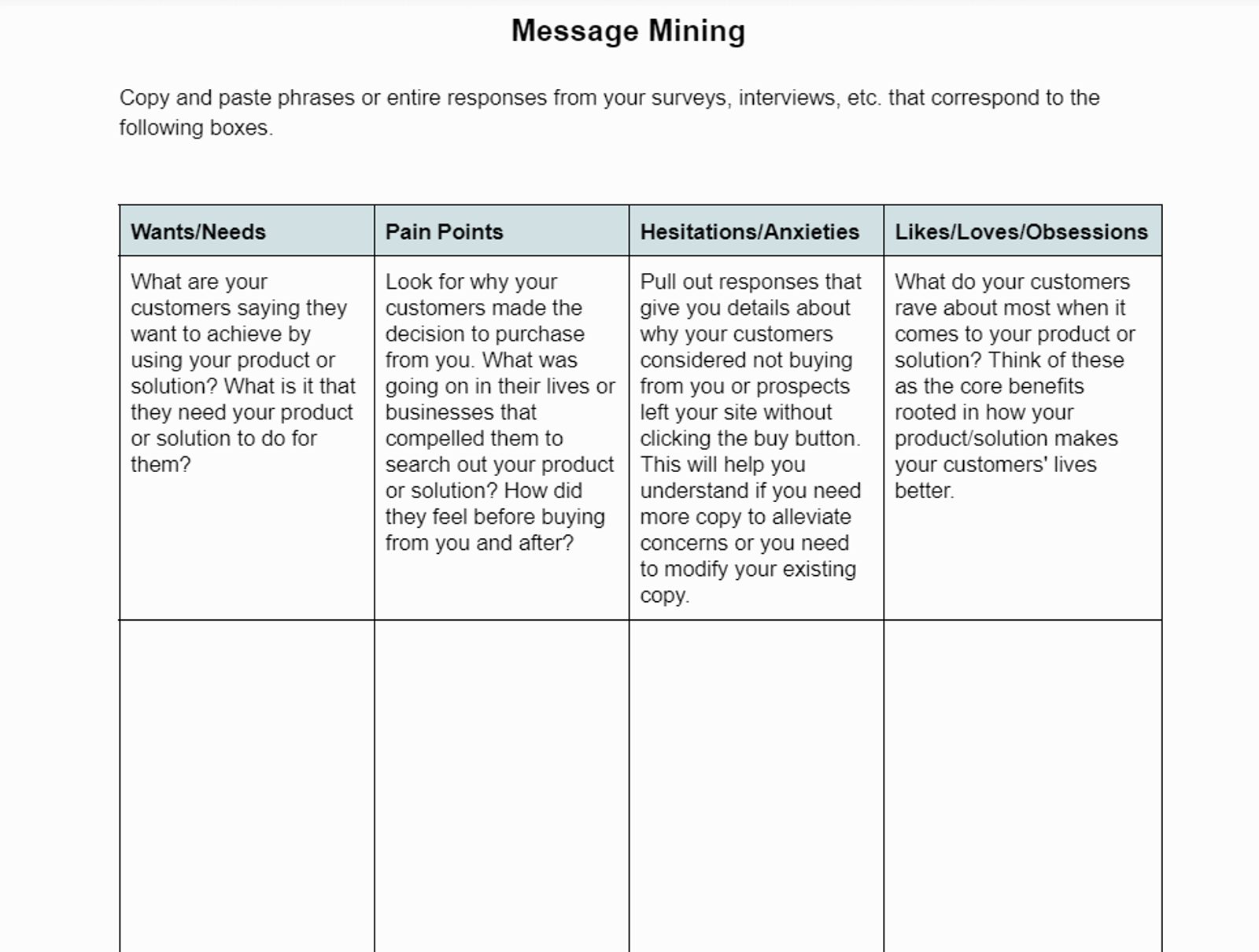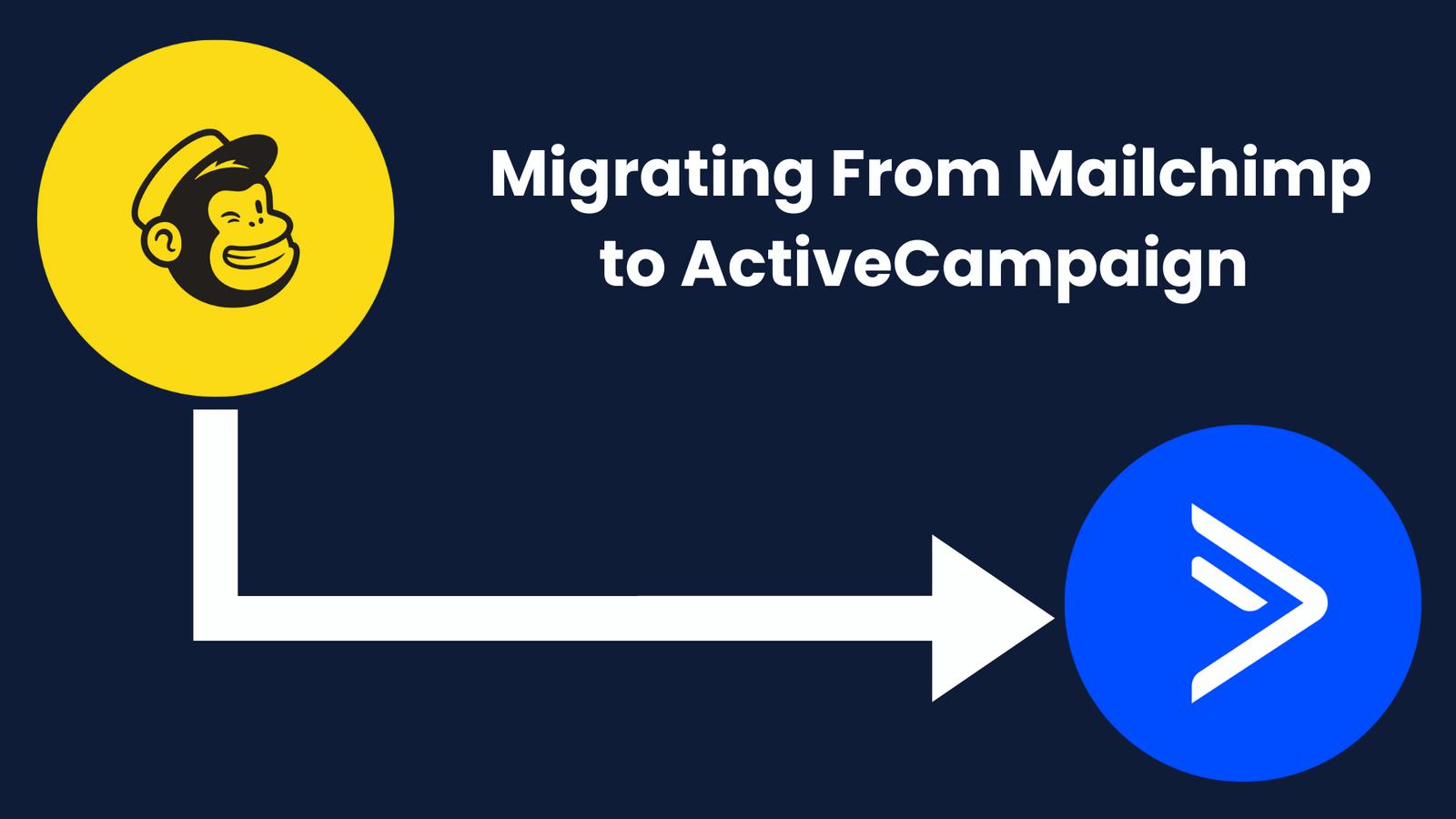We’re all well aware of the stereotypical sales and marketing divide:
Marketing generates a ton of leads, and sales convert only a small handful of them. Sales complain that the leads are of poor quality; marketing complains that sales aren’t doing a good enough job of nurturing each lead through the sales funnel.
The truth may be somewhere in between: both departments might not be doing a perfect job of targeting the right customers.
If this is something you have experienced, sales targeting can solve this fundamental issue.
In this article, you’ll gain an understanding of why sales targeting is such a crucial process and learn how to best use this approach to close sales and drive new revenue.
What is sales targeting?
Sales targeting is the strategic process of determining who your ideal sales prospects are and what characteristics and behaviors they exhibit while documenting a strategy for how you’ll reach, track, and nurture them. You’ll then use this plan to attract those prospects.
It is a research-heavy endeavor, typically performed by sales leaders and senior executives in a new or growing company, though it can be useful at any stage.
Sales targeting aims to improve the efficiency of your sales efforts by identifying the types of customers who are most likely to purchase and who represent the greatest value to the business (typically described as the “ideal customer”).
Exactly how you determine your target audience depends on what matters most to your business in its current growth stage. While the majority of businesses (53%) prioritize leads based on account profitability, other KPIs can be used during the sales targeting process, such as:
- Whether or not the customer is using a competing product
- The degree of mutual fit between customer needs and your company’s offering
- Deal velocity: how long it will take to close that deal
- Overall alignment with sales strategy
Customer interviews, surveys, reviews, and data analysis (such as customer usage analytics) are essential aspects of the sales targeting process.
We should note here that while they sound very similar, sales targeting and sales targets are two very different concepts.
Sales targeting is all about determining your ideal customers and answering questions such as “What are targeted sales?” Targeted sales refers to attracting and selling to specific customers based on your sales targeting process results.
Sales targets (also known as sales quotas), on the other hand, refer to specific sales benchmarks used to measure team success. For example, you could aim to do $100,000 in new deals each quarter. Questions like “What are sales targets and KPIs?” and “What are the types of sales targets?” ask about sales quotas and measurements instead of determining which sales prospects to target.
Why is sales targeting important?
The general purpose behind sales targeting is simple: it helps reps sell better.
When just 55% of inside sales reps and 65% of outside sales reps meet their quota each month, it’s clear that ambitious companies are falling short of expectations. Engaging in sales targeting practices is a crucial lever for solving this challenge.

Sales targeting uses the information you have about your customers (whether through usage analytics or interviews and surveys) to make inferences about:
- Accounts you’re most likely to close,
- Accounts that are likely to yield the highest account value
- Accounts who are a strong fit for your business.
These three factors are critical.
Higher conversion rates mean sales professionals spend less time on each deal, and even though they may be dealing with a smaller quantity of leads, total revenue increases. Why? Highly-targeted sales and marketing often lead to fewer inbound leads in exchange for higher purchase intent.
Plus, higher yields drive ACV (Average Customer Value) up and accelerate revenue growth. Since well-matched clients are more likely to stay (AKA less potential to churn), your sales team spends less time filling the leaky bucket and more time growing revenue.
So what does this all mean for your bottom line?
Research by Terminus shows that companies with mature ABM programs drive the majority of their revenue (73% on average) from targeted sales.

Impressive stuff. So, how can you leverage sales targeting initiatives to drive revenue growth in your organization?
How to approach sales targeting to drive performance and grow revenue
Sales targeting is all about research.
The purpose is to identify the characteristics that describe your ideal customer. But without investing the time upfront in audience research (that is, talking to your existing customers, potential customers, and closed/lost deals), you’re not targeting; you’re guessing.
1. Define your end goal
First, it’s critical to understand the sales targeting exercise's goal. That is, how will you describe what your ideal customer looks like?
Will it be a customer persona like the example below? And how will you communicate this information to your sales and marketing teams?

More than that, It’s important to consider how the work you produce will be used in practice. How will you ensure the findings of your sales targeting process get absorbed into your marketing strategies and tactics? It’s not uncommon for a company to design buyer personas for new hires only to file them away until the next marketer comes onboard.
Develop a clear understanding of the goal you’re working toward and how you’ll use the research. That ensures you’ll remain focused during the process and not veer off into an area of research that doesn’t provide actionable insights.
Customer persona documents are a good start, but you should consider supplementing this with a document that describes how the results of your sales targeting will be used in practice.
For instance, companies using an outbound sales model will differ significantly from those who rely on attracting inbound leads in the type of information they need to capture about their customers.
On the other hand, inbound-centric companies may need to understand their customers’ social media habits, while this data may be less critical for outbound sales teams.
The desired outcome of this stage is to develop a clear and concise vision of what your sales targeting process must achieve. You should also condense it into a concise document to share with your team.
2. Analyze your existing data
The best place to start is by exploring the data you already have on your customers.
Ask questions like:
- Which customer segments have the lowest churn rate?
- Which have the most profitable subscriptions or highest deal value?
- How have we attracted these customers in the past?
- Which customers have the lowest CAC or best ROI?
Understanding previous performance allows you to make data-based decisions to guide your future campaigns.
The desired outcome of this stage is to determine the sales metrics that represent your ‘best’ customers. Then you can use this information to target similar prospects.
3. Conduct customer interviews and surveys
Data will get you a long way, but holding actual conversations with your customers lets you dive deep and unpack more qualitative insights.
Interview four kinds of customers:
- Your current customers (to uncover why they buy from you)
- Prospects that are in the pipeline (to learn more about the pain points and challenges that have brought them to consider your company)
- Your churned/previous customers (to uncover why they chose to leave)
- Closed/lost prospects (to understand why they chose to or not to purchase from you)
While interviews are best, they’re labor-intensive. Surveys are a simple way to get feedback and help ask questions that seek qualitative data, like “What is your role at your company?”
However, it’s also essential to ask deeper questions such as “What challenges were you facing prior to using our product?”
Jennifer Havice of Make Mention has a great framework for analyzing customer research.

The end goal of this stage is to expand on the insights you’ve extracted from your data analysis. You want to gain a broader and deeper understanding of your ideal customer.
4. Detail how you will use your new insights to target your ideal customers
This is the crucial part and where many companies fall flat.
They create user personas that say helpful things about the kinds of customers they want to attract but fail to describe and communicate to their team how they expect to use them.
You need to go deeper and connect the dots between that information and your methods to attract customers and meet your sales goals.
For example, outbound-focused teams might have identified during the previous phases that the ideal customer is a CIO of a SaaS company with revenues between $1m and $3m. For various reasons, they seem to outperform leads in other positions and company sizes.
Here’s another example: An inbound sales organization identifies the social media platforms they’re on (through customer surveys) and what pain point drives them to purchase (through qualitative interviews). This information then needs to be disseminated to marketing teams who can run an ad on the relevant platforms using messaging that targets that specific pain point.
The outcome of this stage is to detail exactly how each insight you’ve identified (and documented in your user persona or research findings) can be used by members of your sales and marketing teams.
Using your CRM for targeted sales outreach
Now we get to the fun part: using all that research to make some sales happen!
Here are a few ways your CRM can help you sell specifically to your target audience:
- Targeted email outreach can segment users based on gender, geographic location, and socioeconomic status and sell to the prospects who best meet your sales targeting criteria.
- Lead scoring allows you to prioritize leads based on customizable attributes you’ve identified during the sales process, so your reps can focus on the most crucial leads.
- Sales automation lets you configure triggers based on intent and customer interactions and automate email and social media touchpoints accordingly.
- Location-based marketing can target customers based on geographic location (for example, if they’re near your store).
Conclusion
Sales targeting is a critical process to understand your customers’ behaviors and needs and determine how best to reach new prospects who share those attributes.
Of course, conducting and documenting the research is only half of the battle. To put these findings to good use, you need a powerful CRM tool to help you personalize your outreach, segment prospects, score leads, and report on the effectiveness of every targeted sales effort.
Funnily enough, the ActiveCampaign CRM ticks all of those boxes. Test it out with a 14-day free trial today.






